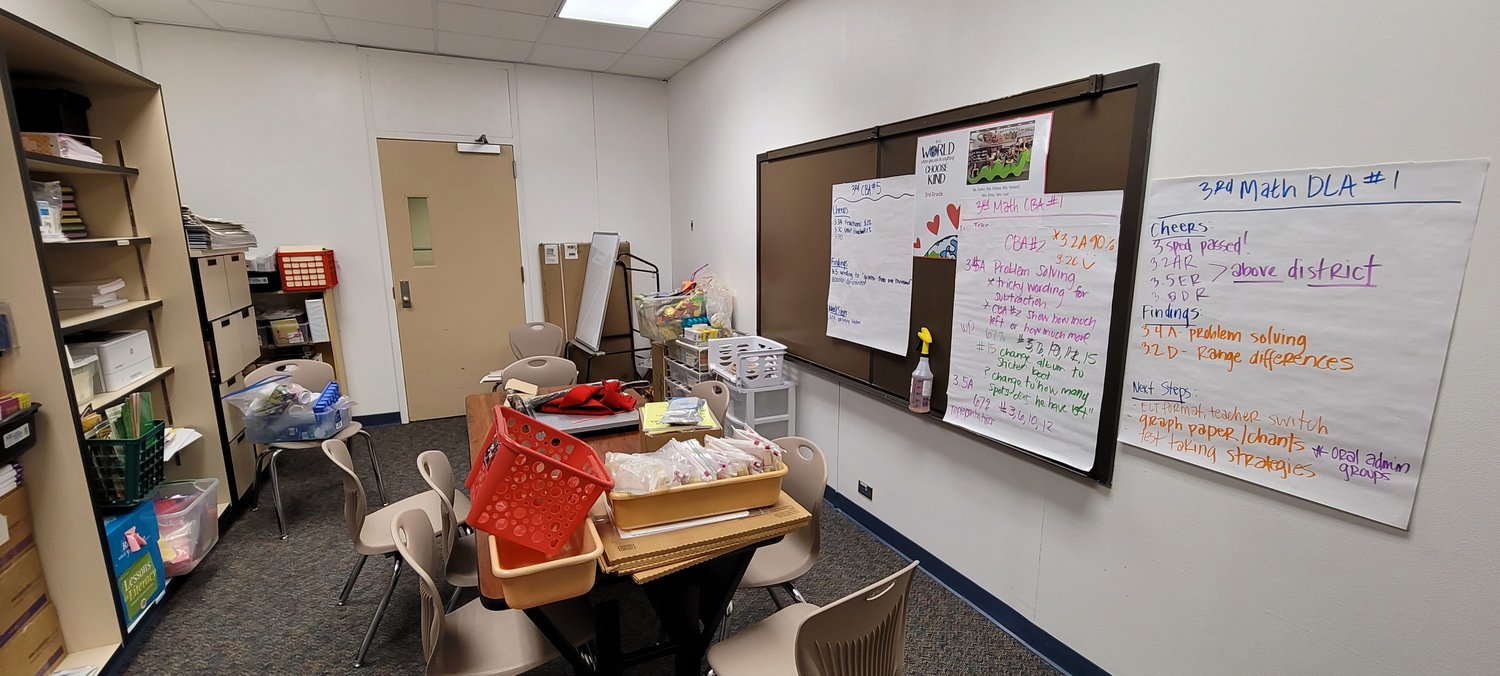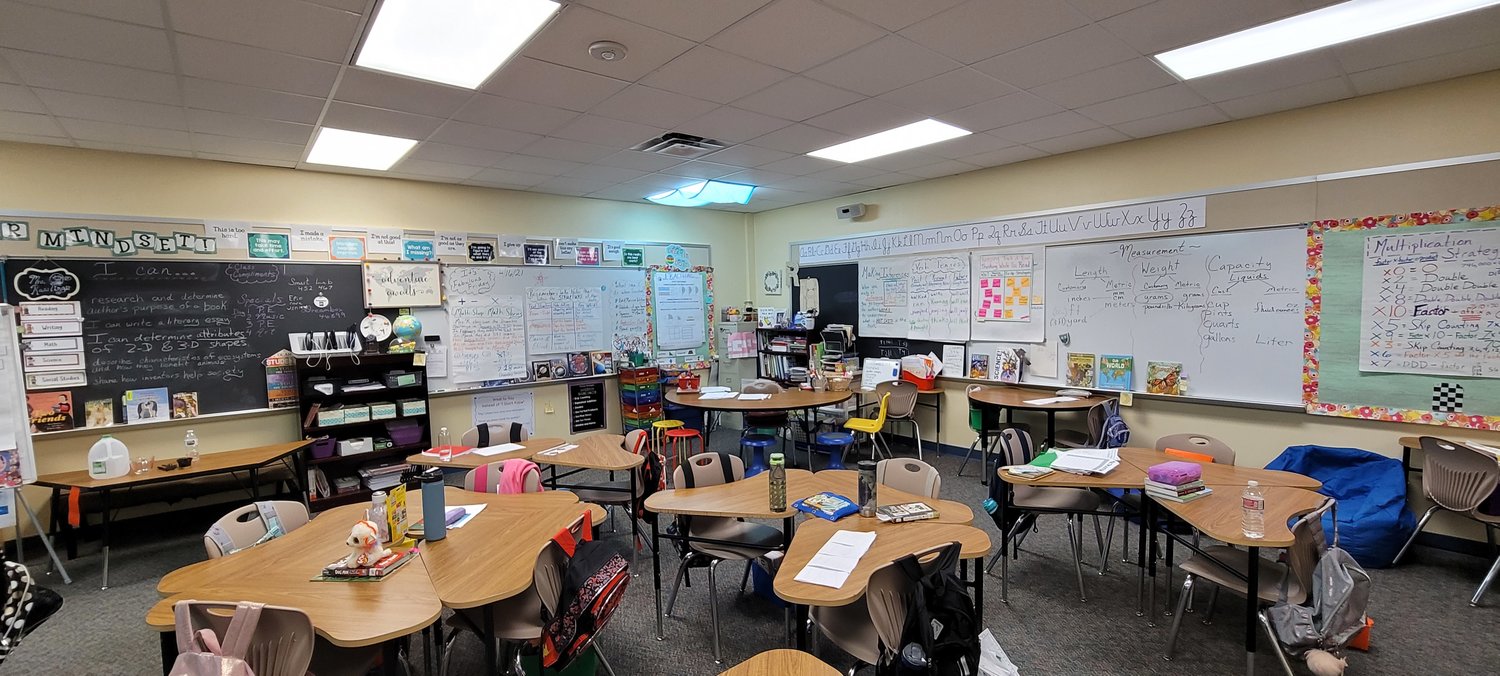KISD’s Winborn Elementary highlights renovation needs
Katy ISD has four bonds totaling about $676.2 million on the May 1 ballot intended to address growth in the district and aging infrastructure. Among those is Proposition A, a roughly $591.4 million …
This item is available in full to subscribers.
Attention subscribers
To continue reading, you will need to either log in to your subscriber account, below, or purchase a new subscription.
Please log in to continue |
KISD’s Winborn Elementary highlights renovation needs
Katy ISD has four bonds totaling about $676.2 million on the May 1 ballot intended to address growth in the district and aging infrastructure. Among those is Proposition A, a roughly $591.4 million bond that would be used for new schools as well as improving existing campuses such as Diane Winborn Elementary.
District representatives provided a tour of Winborn to press representatives in an effort to educate the public on what renovation needs the school – which is about 40 years old – has. The campus, they said, is not on par with newer campuses such as Bryant or McElwain elementaries, which opened in the past three years.
“I think, because the building is so old, it wasn’t built with the functionality or the thought in mind of, you know, 22 kids in a classroom with a teacher or anywhere from four to seven teachers in a planning room planning at the same time,” said Winborn Principal Kasey Lowry.
Throughout the tour, Lowry’s point was illustrated in multiple ways. While the school has seen updates since it opened in 1981, the student body has grown and is expected to exceed 700 students in the 2021-22 school year. With that growth, planning spaces and coworking spaces have become cramped, Lowry said. With the need for more collaborative lesson planning among teachers and teachers’ aids, space for educators to collaborate is important. However, the planning rooms generally are filled with office supplies in boxes and pushed to the side on tables intended for teachers to collaborate.
KISD Chief Operations Officer Ted Vierling said the district has also taken what used to be common areas for collaborative learning and used that space to create classrooms. With that, there are security concerns with walls that don’t reach the ceilings and an entryway that doesn’t serve standardized security practices.
Additionally, one of Winborn’s administrative staff is in an office that was formerly a file room and supply closet.
Lowry said the current cramped layout of the school is a hit to teacher and student morale because they see the high-end campuses in other parts of the district. While employees enjoy working with the faculty and staff at Winborn, which she said feels like a work home to them, staff still see those other campuses and consider moving to nicer facilities, making retention and recruiting teaching talent at Winborn a challenge.
Lowry said restrooms are an important upgrade that is needed for Winborn because the current facilities don’t serve the larger student body’s needs and repairs to bathrooms are needed more and more regularly.
Vierling said Winborn requires an upgrade to its library. Forty years ago, open concept libraries were the trend. Recently though, librarians have wanted classroom space integrated into libraries for reading to groups and teaching classes about library science. The district would also like to add more technology such as computer stations into older libraries to ensure students have access to them.
Proposition A, which covers new campuses and campus improvements, complements Proposition B which is set to help the district refresh its technology base, Vierling said. Older campuses such as Winborn were created before the internet became as integral in education as it is today. Winborn currently doesn’t have enough electrical outlets and was not built with WiFi signals or installing data cabling throughout the campus in mind. Improving technology can help students learn and provide flexibility for teachers, he said.
“We’re looking at adding laptops for teachers now as opposed to a static desktop, Vierling said. “It gives them more flexibility in terms of moving around the classroom if they need to go and work with a (student or small group), or even taking it home on the weekend if they have to do that.”
Vierling and Lowry both said they wanted to take the opportunities Proposition A would provide to the district to improve opportunities for students and create an environment that is more likely to engage students in the school experience.
“We treat this as our kids’ second home and take care of the building and (make) sure we’re maintaining it and cleaning it and that kind of thing,” Lowry said. “So, I definitely want to be able to work with (an architect and) work within our budget to make sure that we’re creating and updating the building for our kids so that they want to come to school … that they feel like, ‘Oh! This is fun, it’s lively, it’s fresh, it’s open.’”



















